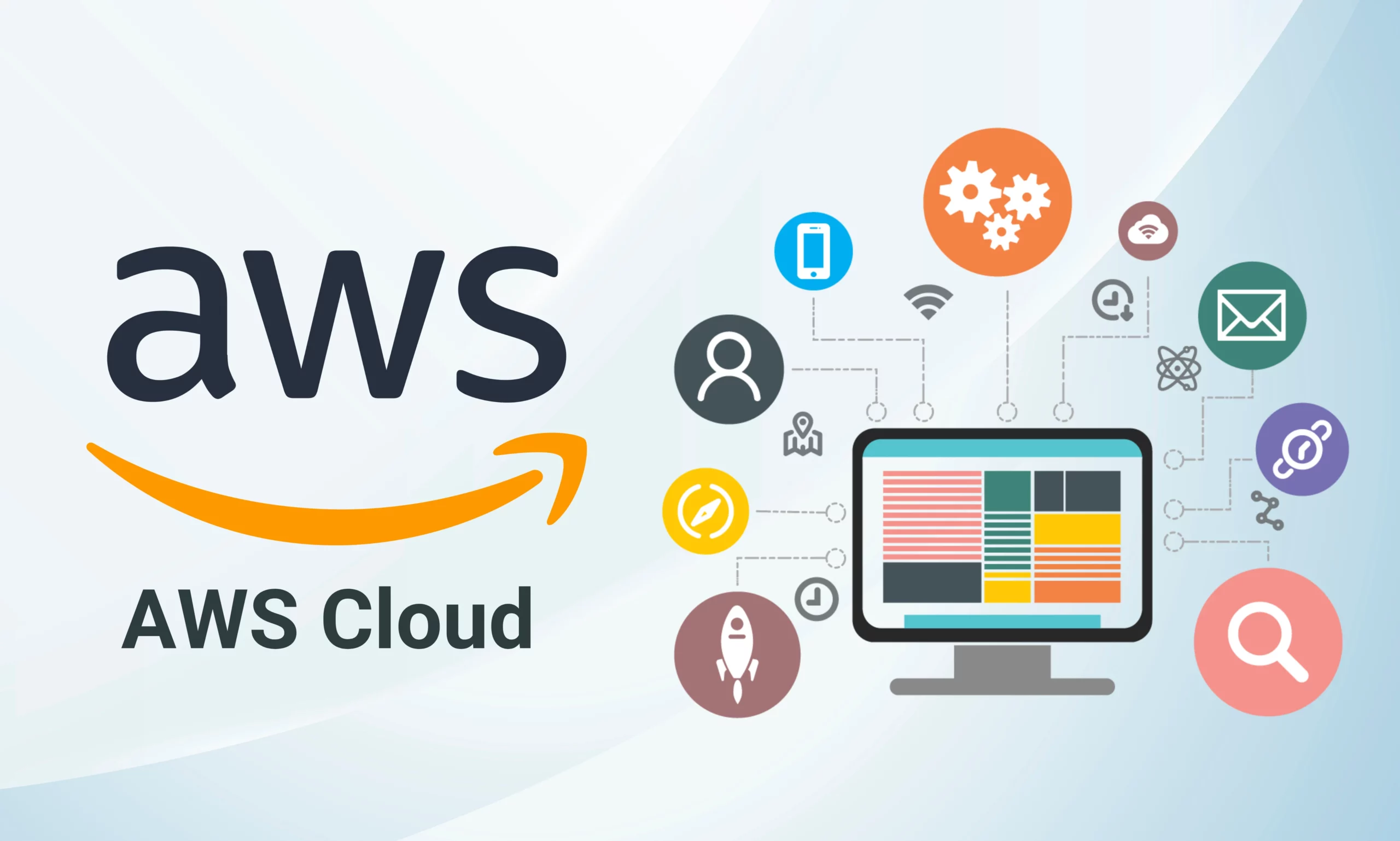How to Leverage a Purchased AWS Account for Your Business?
Introduction
In these days’s virtual landscape, cloud computing has grown to be a cornerstone of innovation and efficiency for organizations of all sizes. Amazon Web Services (AWS) sticks out as one of the main cloud carrier vendors, presenting a great array of tools and services that empower corporations to operate greater flexibly, scale unexpectedly, and decrease operational prices. With its complete suite of solutions—starting from computing power and storage alternatives to superior analytics and gadget mastering competencies—AWS allows businesses to harness the electricity of the cloud successfully.
Given the competitive nature of the market, many groups are exploring various techniques to beautify their operations. One such strategy is shopping an existing AWS account. This approach can provide on-the-spot get right of entry to pre-configured surroundings, permitting groups to skip the time-ingesting setup phase and leap instantly into leveraging cloud answers. Businesses may remember this feature to boost their cloud adoption, get the right of entry to specialized sources, or take benefit of current configurations that align with their unique needs.
The reason for this blog is to guide you through the process of effectively leveraging a bought AWS account in your enterprise. We’ll discover the way to apprehend your account, verify your wishes, optimize offerings, scale operations, preserve performance, and make certain your group is equipped with the proper talents. By the quit of this guide, you’ll be better organized to unencumber the full potential of your AWS investment and pressure your commercial enterprise ahead in the cloud.
Visit Our Account: Buy Aws Account

Section 1: Understanding Your Purchased AWS Account
1.1 Types of AWS Accounts
When thinking about a bought AWS account, it’s essential to apprehend the exceptional account kinds to be had: non-public, business, and educational.
- Personal Accounts are usually used for individual projects or studying functions. While they provide get right of entry to to maximum AWS offerings, they may have barriers in terms of aid and aid allocation, making them much less suitable for big-scale programs.
- Business Accounts cater to companies and offer stronger functions, along with improved technical help, billing alternatives, and entry to extra offerings designed for industrial use. These bills are ideal for corporations looking to scale their operations or utilize advanced AWS talents.
- Educational Accounts are tailor-made for instructional establishments and college students, frequently imparting unique pricing and getting admission to instructional assets. While useful for getting to know and experimenting, they’ll lack some employer-degree capabilities determined in business bills.
Understanding these differences is vital, as every account kind comes with its blessings and barriers, impacting how your organization can make use of AWS services efficiently.
1.2 Reviewing Account Details
Once you’ve received an AWS account, the next step is to get the right of entry and evaluate its settings. To do this, log in to the AWS Management Console, wherein you can navigate via various offerings and account settings. It’s essential to make yourself familiar with the dashboard, as it offers insights into utilization, billing, and service control.
A thorough assessment of existing assets and configurations is critical for several motives. First, it lets you identify any pre-present setups that could benefit your cutting-edge projects. Additionally, understanding useful resource allocation helps in optimizing performance and controlling fees. By taking the time to explore your account’s information, you could make certain that you are ready to leverage its abilities in your enterprise wishes.
Section 2: Assessing Your Business Needs
2.1 Identifying Business Objectives
To efficaciously leverage a bought AWS account, it’s critical to begin by surely identifying your enterprise goals. Aligning AWS abilities together with your desires will help you maximize the benefits of cloud offerings. For example, in case your number one goal is scalability, AWS offers strong gear along with Auto Scaling and Elastic Load Balancing, which can help you adjust sources primarily based on calls seamlessly. This flexibility is especially precious for businesses experiencing variable site visitors, which include e-trade websites throughout income activities.
Another common aim is price reduction. AWS offers diverse pricing fashions, together with pay-as-you-cross and Reserved Instances, permitting you to optimize your spending. By reading your current utilization patterns and forecasting future desires, you could pick the maximum cost-effective options. Clearly defining those targets will guide your decision-making manner as you enforce AWS offerings to meet your unique enterprise needs.
2.2 Evaluating Current Infrastructure
Once you’ve set up your enterprise goals, the subsequent step is to assess your present-day infrastructure. This involves studying your existing systems to understand how they can combine with AWS offerings. Begin mapping out your present-day applications, databases, and workloads to become aware of regions wherein AWS can beautify performance, reliability, or cost-effectiveness.
Consider the compatibility of your existing applications with AWS services. For instance, in case you are going for walks in a conventional on-premises database, migrating to Amazon RDS can improve scalability and decrease renovation overhead. Similarly, in case your commercial enterprise relies on statistics storage, transferring to Amazon S3 can offer scalable and sturdy garage answers.
Additionally, determine the capacity for hybrid cloud solutions. For businesses that require a slow transition, AWS offers gear like AWS Direct Connect and AWS Storage Gateway, allowing you to integrate on-premises environments with cloud offerings seamlessly. By thoroughly comparing your cutting-edge infrastructure, you may discover the simplest integration strategies and ensure a clean transition to leveraging AWS in your enterprise dreams.
Section 3: Optimizing AWS Services for Your Business
3.1 Key AWS Services to Consider
To effectively leverage your bought AWS account, it’s important to get yourself up to speed with key offerings that could enhance your enterprise operations. Here are some crucial AWS offerings to recall:
- Amazon EC2 (Elastic Compute Cloud): EC2 offers scalable computing capability within the cloud, allowing corporations to run applications on virtual servers. It’s perfect for hosting websites, strolling applications, or handling workloads. You can select from numerous example sorts primarily based on your performance necessities and scale assets up or down as wanted.
- Amazon S3 (Simple Storage Service): S3 is an object storage service designed for excessive sturdiness and availability. It’s best for storing and retrieving any quantity of data, whether or not it’s backups, media files, or application statistics. Businesses can leverage S3 for facts garage, content distribution, and records archiving.
- Amazon RDS (Relational Database Service): RDS simplifies the setup, operation, and scaling of relational databases in the cloud. It supports multiple database engines, which include MySQL, PostgreSQL, and SQL Server, making it suitable for agencies that require a dependable database solution for programs. RDS automates backups, software program patching, and scaling.
- AWS Lambda: This serverless computing service lets you run code without provisioning or managing servers. It’s notable for automating tasks and integrating diverse AWS services. Businesses can use Lambda for backend processing, real-time records processing, and developing occasion-pushed packages.
- Amazon CloudFront: A content material delivery network (CDN) that accelerates the distribution of your static and dynamic web content. By caching content at area locations, CloudFront complements the user experience using lowering latency and improving load instances.
By knowing those services, you may pick out the proper mixture that aligns together with your business needs, whether or not it’s for software improvement, data storage, or patron engagement.
Visit Our: Cloud Account

3.2 Implementing Best Practices
Once you have diagnosed the AWS offerings that fit your commercial enterprise, enforcing excellent practices will assist you maximize their capacity at the same time as minimizing costs and dangers.
- Cost Management Strategies: Effective price control is important to avoid unexpected costs. Utilize AWS Budgets to set custom cost and utilization budgets, enabling you to track spending against your forecasts. Additionally, keep in mind Reserved Instances for EC2 and RDS, which offer large savings over on-demand pricing when you commit to the usage of these offerings for a longer term. Regularly reviewing your AWS billing and utilization reviews can also assist perceive value-saving possibilities.
- Security Best Practices: Security should be a top priority while using AWS offerings. Implement IAM (Identity and Access Management) roles to control getting admission to your sources. By assigning specific permissions primarily based on personal roles, you can make certain that the best legal personnel can get the right of entry to touchy statistics and operations. Additionally, configure your assets inside a VPC (Virtual Private Cloud) to create a steady network environment. Utilizing protection businesses and community ACLs will further beautify your safety posture by controlling inbound and outbound traffic.
By adopting these value control and security fine practices, you could efficaciously optimize your AWS offerings, making sure that your commercial enterprise operates efficiently and securely in the cloud.
Section 4: Scaling Your Operations
four.1 Utilizing Elasticity and Scalability
One of the most compelling functions of AWS is its ability to offer both elasticity and scalability, allowing agencies to evolve to changing needs without the want for vast upfront investments in hardware. Understanding how to leverage this scalable architecture can dramatically decorate your operational performance and responsiveness.
Taking Advantage of AWS’s Scalable Architecture
AWS’s infrastructure is designed to automatically regulate resources based on site visitors and utilization patterns. Here are key approaches to make use of this scalability:
- Auto Scaling: This service robotically adjusts the range of EC2 times in response to real-time demand. For instance, at some point of peak usage times (like holiday income for e-trade websites), Auto Scaling can boom the number of times to handle the burden. Conversely, during off-peak hours, it can reduce the wide variety of instances to store prices.
- Elastic Load Balancing (ELB): ELB distributes incoming software visitors through a couple of objectives, consisting of EC2 times. This ensures that no single example will become a bottleneck and improves the general availability of your applications. As site visitors increase, ELB can seamlessly route requests to additional instances released via Auto Scaling.
- Amazon RDS Read Replicas: For database workloads, RDS lets you create study replicas to offload examine site visitors from your number one database example. This is especially useful for applications with high study-to-write ratios, improving performance and availability.
Real-World Examples of Scaling with AWS
Many organizations have efficiently harnessed AWS’s scalability to meet their operational wishes:
- Netflix: One of the most outstanding examples, Netflix makes use of AWS to scale its streaming services. By utilizing Auto Scaling and Elastic Load Balancing, Netflix can adjust its assets dynamically based totally on viewer calls, ensuring an unbroken enjoyment even in the course of top viewing instances. This flexibility has been vital during principal activities like new collection launches, where viewer visitors surge.
- Airbnb: The popular accommodations platform is predicated on AWS to control its significant facts and purchaser site visitors. By leveraging AWS’s scalable services, Airbnb can speedy scale its infrastructure to accommodate thousands of new listings and elevated bookings, all even while retaining overall performance and reliability.
- Slack: As a collaboration tool that reviews variable utilization patterns throughout the day, Slack utilizes AWS to deal with its fluctuating visitors. By using Auto Scaling and RDS, Slack can make certain that its services remain speedy and responsive, while consumer pastime spikes in the course of commercial enterprise hours.
By information and enforcing AWS’s scalability features, you can make certain your enterprise can develop and adapt seamlessly to changing demands, ultimately improving consumer experience and operational performance.
Section 5: Monitoring and Maintenance
five.1 Setting Up Monitoring Tools
Monitoring your AWS environment is critical for keeping ideal overall performance and ensuring the reliability of your packages. AWS CloudWatch is an effective monitoring provider that provides actual-time visibility into aid utilization, utility overall performance, and operational fitness.
With CloudWatch, you could track metrics consisting of CPU usage, disk I/O, and network visitors for your AWS sources. It permits you to set up alarms that notify you whilst thresholds are breached, permitting proactive control of your infrastructure. For example, if CPU utilization on an EC2 example spikes beyond a detailed limit, CloudWatch can cause an alert, prompting you to analyze or robotically scale sources to preserve performance. Additionally, CloudWatch Logs permit you to monitor log documents and troubleshoot issues successfully. By utilizing those gear, you may benefit from insights into your AWS environment, optimize performance, and fast reply to potential troubles.
5.2 Regular Maintenance Practices
Regular maintenance is vital for keeping your AWS infrastructure running easily and securely. Conducting audits and updates has to be part of your routine operations to make sure the whole thing remains optimized and compliant.
Start by performing everyday audits of your AWS environment to discover unused resources, previous configurations, and security vulnerabilities. This method can help lessen fees by eliminating sources that no longer serve a cause and ensuring that your infrastructure adheres to first-rate practices. Additionally, frequently updating your software and services, together with applying patches and updates, is essential for maintaining safety and performance.
Keeping in tune with your usage and charges is likewise crucial. Use gear like AWS Budgets and Cost Explorer to monitor your spending and usage styles, enabling you to make knowledgeable choices approximately resource allocation. Regularly reviewing those metrics allows you to identify trends, expect destiny fees, and optimize your useful resource utilization, making sure that your AWS investment stays price-effective.
By putting in effective monitoring equipment and committing to everyday protection practices, you could enhance the overall performance, safety, and price-performance of your AWS environment, in the end helping your enterprise goals.
Visit Our: Shop

Section 6: Training and Support
6.1 Investing in Training
As you leverage AWS services, investing in schooling in your team of workers becomes vital. Educating your group on AWS abilities no longer simply enhances their ability set but also empowers them to utilize the platform successfully, leading to advanced productivity and innovation. Familiarity with AWS offerings lets your staff make knowledgeable choices about architecture, safety, and value control, which can be crucial for maximizing your cloud funding.
There are numerous assets available for schooling. AWS gives quite several certifications that validate knowledge in diverse AWS domains, from cloud structure to machine studying. These certifications can inspire your team to deepen their know-how and showcase their skills. Additionally, online guides through systems like Coursera, Udacity, and AWS Training provide flexible mastering possibilities, permitting employees to examine at their very own pace. Investing in training ensures your crew is properly geared up to navigate the complexities of AWS, fostering a subculture of non-stop getting to know and version.
6.2 Accessing AWS Support
While training is crucial, getting access to sturdy guide options is equally vital. AWS gives diverse assist plans tailor-made to specific enterprise wishes. The Basic plan affords get right of entry to to customer service and documentation, while the Developer and Business plans encompass additional functions like technical aid, steerage, and get right of entry to to AWS Trusted Advisor, which gives high-quality practices and value-saving hints. For organizations requiring 24/7 guidance and dedicated account management, the Enterprise plan is good.
In addition to formal help plans, using network resources and forums can be invaluable for troubleshooting and information sharing. The AWS Developer Forums, Stack Overflow, and Reddit’s AWS community are exceptional structures for asking questions, sharing experiences, and locating answers to commonplace issues. Engaging with these groups now not only enables solving on-the-spot challenges but also fosters connections with different AWS users who can offer insights and fine practices.
By making an investment in training and leveraging AWS support alternatives, you can ensure your team is prepared to address challenges and maximize the benefits of your AWS surroundings, in the long run riding your enterprise forward inside the cloud.
Contact US: AirVCC.Com
